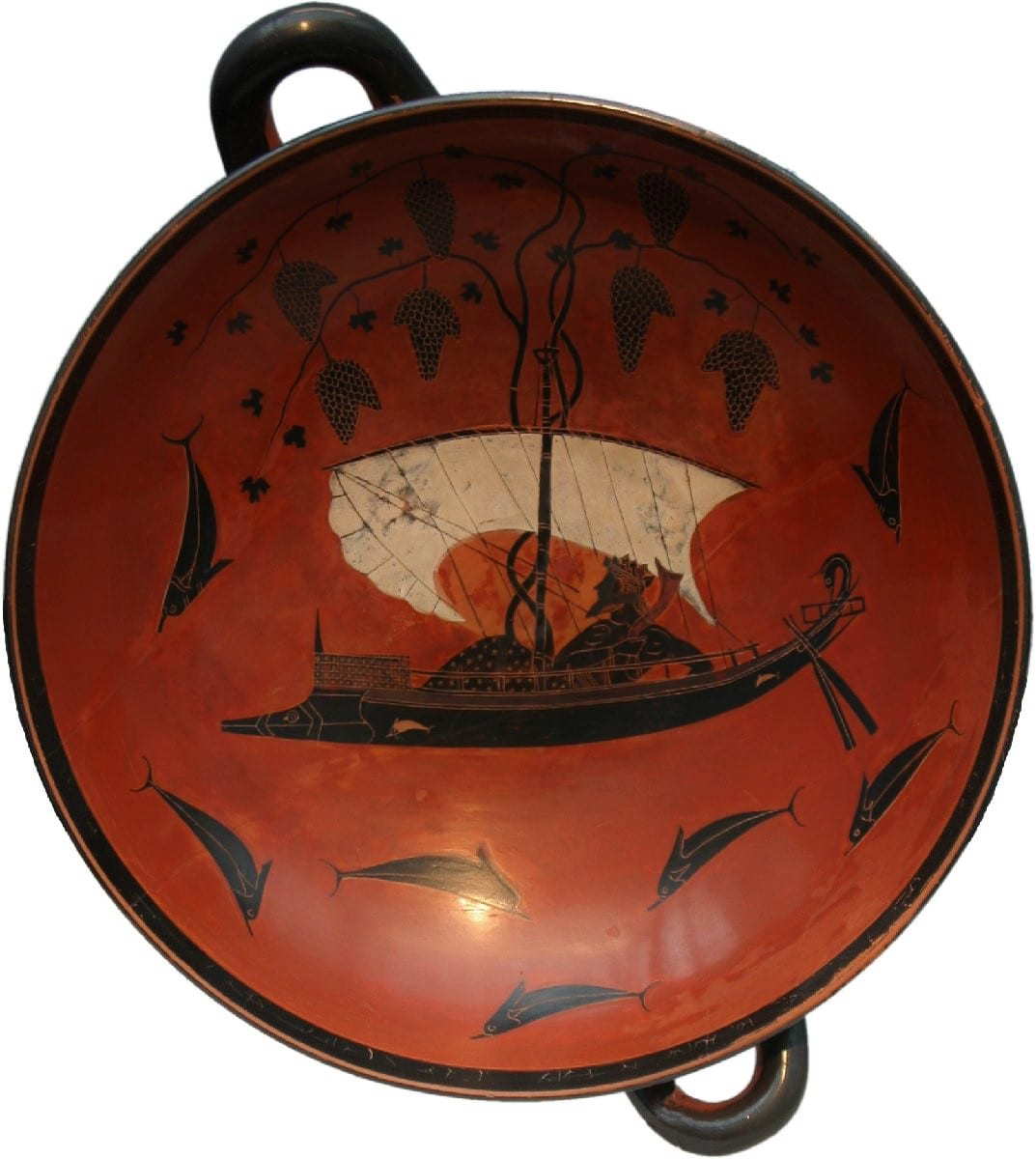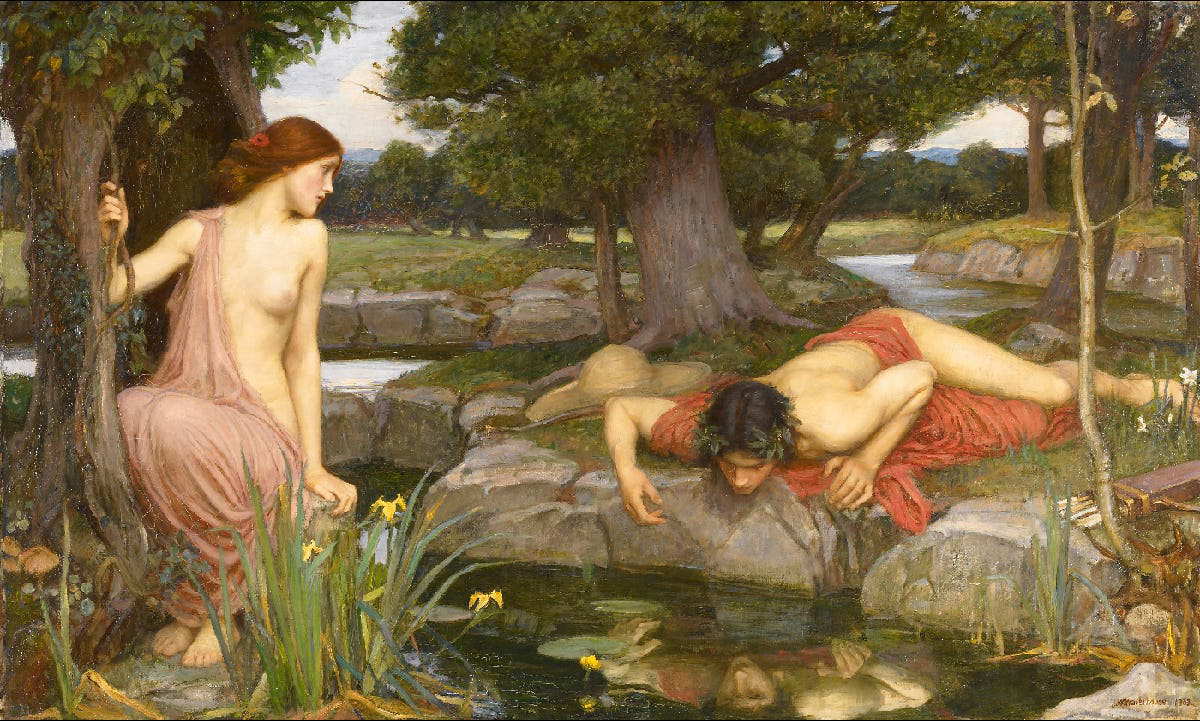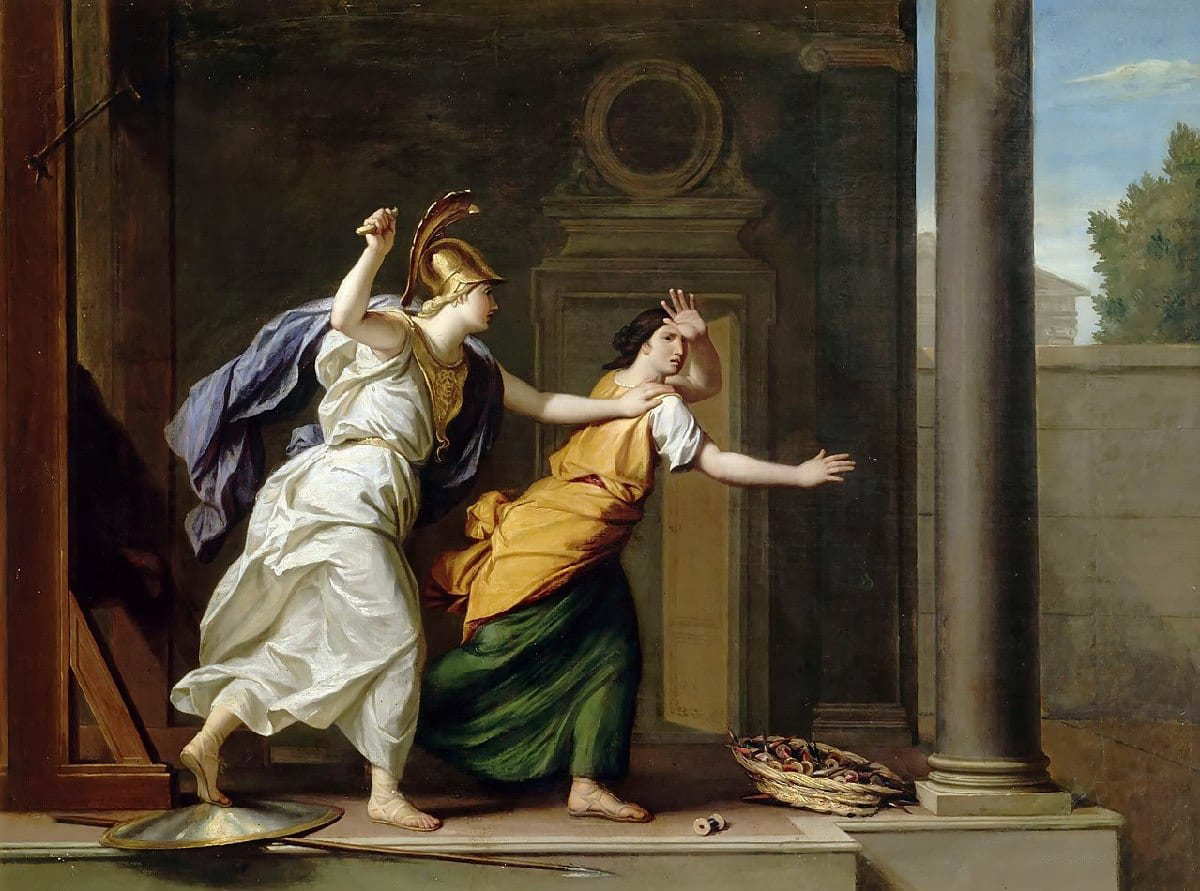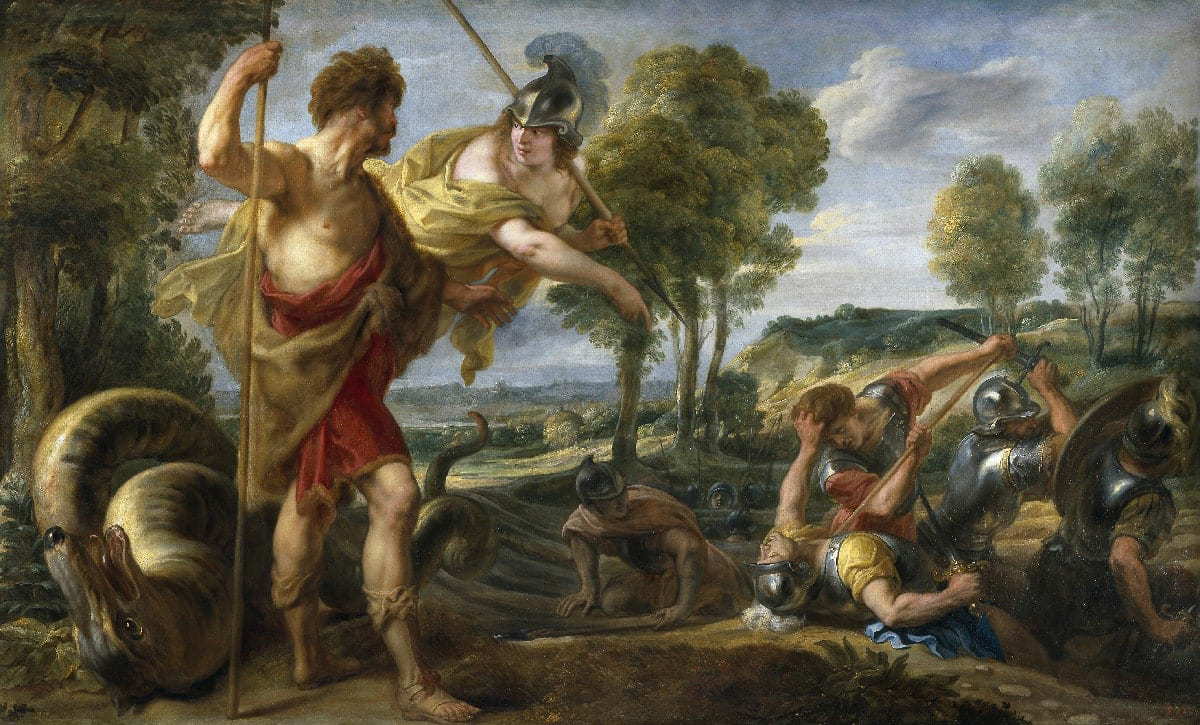
Greek mythology is overflowing with stories of transformation or metamorphosis in Greek. From Zeus taking the form of a golden rain to seduce Danae to Circe transforming Odysseus’ companions to pigs, Greek mythology’s characters constantly test the barrier between humans, gods, and nature.
These are Greek Mythology’s 13 most important stories of transformation.
Introducing Greek Mythology’s Stories Of Transformation

The master of shapeshifting in Greek mythology is Proteus, a sea god who constantly changes form and always avoids answering questions. However, transformation is the main subject of many stories in the classical canon. From Homer’s Odyssey to Ovid’s Metamorphoses, there are a plethora of stories where a hero or a god transforms into something else.
In fact, it seems that for Greek and Roman myths, it was commonplace for gods to shapeshift in order to seduce mortals. Gods also had the power to transform other individuals into other entities to punish or reward.
These transformations often played an important role in the cult of certain deities. The attempt to experience, reenact, or commemorate the transformation that took place in the imaginary space that Greek mythology constituted, was often central for mystical rituals and folk celebrations.
Get the latest articles delivered to your inbox
Sign up to our Free Weekly Newsletter
More than everything, though, these stories of transformation show a fascination with the living experience. They also indicate an early attempt at understanding the natural world by exploring its limits.
Finally, it is worth noting that these mythological transformations were not only part of an animistic worldview; that spirits inhabit everything, from trees to rivers and statues. They were also part of a rich folk tradition with parallels in almost every other culture around the world.
13. Dionysus And The Pirates

In one myth, Dionysus, the god of wine, took a young man’s form and began wandering on the earth. Near a sea, some Tyrrhenian pirates saw and kidnapped the god, unaware of his real identity.
While the pirates were tying down Dionysus, with the intention to sell him to slavery, the ship’s pilot, named Acoetes, understood that something was wrong with the character they had abducted. Believing that behind the young man hid a god, Acoetes attempted in vain to stop his crewmates.
The pirates did not listen to the pilot and finally, Dionysus revealed his true identity filling the ship with vines and beasts. In terror, the pirates abandoned the ship and dived in the sea. As they jumped, they were transformed into dolphins. The only one that was spared was Acoetes.
12. Ganymede And The Eagle

The story of Ganymede typically comes up in every conversation about pedophilia in ancient Greece.
According to the myth, Ganymedes was born in Troy. As a young adolescent of exceptional beauty, he caught the eye of the gods, and more specifically, Zeus. The latter then transformed himself into an eagle and abducted Ganymedes, bringing him to Olympus.
There the young man served as a cupbearer of the gods. Zeus ensured that Ganymedes would remain immortal and eternally young.
In Vergil, Hera, Zeus’ wife, considered Ganymede as an adversary who has erotic relations with Zeus.
11. Leda And The Swan

Leda was the daughter of the Aetolian King Thestius. The day she got married to her husband Tyndareus was also the day that she happened to attract the interest of who other than Zeus.
The father of the gods then took the shape of a swan and seduced Leda. Afterward, Leda spent the night with Tyndareus. The result of this weird story was even weirder. Leda gave birth to two eggs out of which sprang Helen of Troy, Clytemnestra, and Castor and Pollux. The ancient sources disagree on who was the child of Zeus and who was of Tyndareus.
10. Europa And The Bull

The story of Europa’s abduction is yet another story of Zeus, transforming himself into an animal to seduce a mortal woman. In this case, the god took the shape of a bull.
Europa was a descendant of the nymph Io from Phoenice. Zeus transformed himself into a white bull and mingled with other animals in the court of her father, Agenor, the King of Tyre. At some point, Europa petted the bull and climbed on his back. Zeus did not lose the opportunity and abducted the woman to the island of Crete where Europa became a queen and gave her name to the whole continent now known as Europe.
9. Danae And The Golden Rain

Danae’s story implicates Greek mythology’s most familiar character, the king of the Olympian gods, Zeus. Up until now, we have seen Zeus taking the shape of an eagle, a swan, and a bull. However, for the love of beautiful Danae, mother of Perseus, Zeus went one step further. To claim Danae, the immortal god, became a rain of gold.
The story is the following. Danae was the daughter of Acrisius, the king of Argos. Acrisius had received a prophecy saying that his daughter’s son would kill him. To make sure that the prophecy would not come true, Acrisius had Danae imprisoned in a bronze chamber specially made for her below the royal palace. And this plan would have worked if it wasn’t for the play of the gods. Lost story short, Zeus took the shape of golden rain and sneaked through the roof of Danae’s chamber. In the end, Danae gave birth to Perseus, and Acrisius understood that resisting one’s fate is futile.
8. Pygmalion’s Statue

Pygmalion was a sculptor who had become frustrated with the immorality of certain women. Having decided to abstain from female company, he put his best efforts into creating the perfect sculpture of a woman.
Pygmalion eventually created the most beautiful image of a woman. It was so perfect that he became obsessed with it. Before he knew it, Pygmalion was in love with the statue and began calling it his wife.
In a festival of Aphrodite, the goddess of love, Pygmalion begged the goddess to give him a wife like his statue, and the goddess listened. When the sculptor returned home, he discovered that his sculpture was becoming more and more alive the more he touched her. In the end, Pygmalion’s wish was granted, and Aphrodite herself married Pygmalion and the statue that was now a real woman.
7. Daphne

Once upon a time, Apollo, the god of music, offended Eros, the god of love. Eros then designed the perfect revenge. Using his powers, he made Apollo feel a powerful attraction to the river nymph, Daphne. However, he also made sure that Daphne would be powerfully repulsed by Apollo.
The god could not control his emotions and hunted down Daphne, who had also taken an oath to remain a virgin for life. As Apollo hunted Daphne, the nymph could tell that the god was catching up with her. At the last moment, and as Apollo grabbed her, she screamed for the help of her father, the river god Peneus. Peneus then transformed Daphne into a laurel tree (literally a “daphne tree” in Greek).
Apollo never forgot his love for Daphne and took care of the tree, ensuring that its leaves would always remain green.
6. Narcissus: Greek Mythology’s Most Narcissistic Character

Narcissus was an extremely young man whose beauty attracted the interest of a nymph called Echo. When she revealed her love, Narcissus rejected her and asked her to leave him alone. Heartbroken, Echo left and began roaming alone. Her sorrow was so great that her body vanished into the air. The only thing that remained was her voice, which can still be heard in the woods and the mountains.
The sad ending of Echo enraged the goddess of revenge, Nemesis, who decided to punish Narcissus. One day, Nemesis lured the young man to drink water from a pool with calm mirror-like water. Narcissus saw his reflection on the water and fell in love with his reflection.
The tragic end of Narcissus came soon thereafter. Once he realized that his idol was beyond his reach, Narcissus felt anguish beyond reason. Having given up on life, he laid down on the ground and was transformed into a flower with white petals and a yellow heart.
5. Arachne

Arachne was a woman from Lydia with legendary weaving skills. When people saw her tapestries, they always told her that she is truly blessed by Athena, the patron deity of weaving. Arachne, however, did not believe that she owed anything to the goddess and openly challenged her.
Athena heard Arachne’s remarks and visited her workshop. The mortal woman and the goddess decided to solve their differences with a weaving competition. Athena weaved a tapestry showing the gods as righteous and powerful guardians of order. Arachne weaved 18 examples of gods transforming themselves into something else to cheat and rape mortals.
In the end, Athena could not find anything wrong with Arachne’s tapestry. In fact, Arachne might have surpassed the goddess. Athena could not bear this. She tore Arachne’s work and hit her three times on the head. Arachne could not take the pain, so she hanged herself. At that moment, Athena felt pity for the woman and decided to spare her life but not let her go unpunished. She then transformed Arachne into the first spider. Arachne was no longer human, but she could still weave her web. Truly one of Greek mythology’s most tragic characters.
4. Medusa: The Story Of Greek Mythology’s Notorious Gorgon

Few other Greek myths have received as much attention as that of the Gorgon Medusa. Everyone knows more or less what Medusa can do. She has snakes instead of hair and eyes that can turn those looking at them into stone. But how did Medusa end up like that?
Everything began when Poseidon, the ocean god, raped Medusa inside a temple belonging to Athena. The goddess, unable to exact revenge on one of her equals, an immortal Olympian god, channeled her rage for the sacrilege of her sacred space towards innocent Medusa.
Athena transformed Medusa into a hideous being, an entity so appalling and terrifying that she transformed those looking into stone. More disturbing than this injustice is what Athena did next.
For unknown reasons, Athena was not contempt with Medusa’s punishment. So she decided to help the hero Perseus in his quest to kill Medusa. In the end, Perseus beheaded Medusa, and Athena took the head of the unfortunate woman and hanged it on her aegis where it remained.
3. Circe And Odysseus’ Companions

In the Odyssey, Homer’s epic poem, Odysseus and his companion are trying to return to Ithaca after the Trojan War. On their way back, they wash up on the shore of an island inhabited by a powerful witch and one of Greek mythology’s most interesting characters, named Circe.
Circe invites Odysseus’ companions to a feast and uses her powers to transform them into pigs. Only one man manages to escape, and he runs back to Odysseus and his other companions to let them know what happened.
With the help of Hermes, Odysseus will manage to convince Circe to break the enchantment and make his companions human again.
The weird part of this story is not so much that Circe transformed Odysseus’ men into pigs. The weird part is that Odysseus lived with Circe for one year, and together they had two sons.
2. Cadmus

When Zeus abducted Europa, Cadmus, the brother of Europa, began roaming Greece in pursuit of his sister. When he reached Delphi, he consulted the oracle, who told him to give up looking for Europa. Instead, he was told to follow a cow and build a city where she lays down.
Cadmus acted accordingly. At the place where the cow laid he decided to sow the teeth of a dragon, he had killed in another one of his adventures. The teeth grew into a group of powerful warriors, called the Sparti. With their help, Cadmus founded Thebes, and the Sparti became the head of the Theban nobility.
1. Deucalion: The Noah Of Greek Mythology

Deucalion is one of the most interesting characters in Greek mythology. He was considered the ancestor of the Greeks, in the same way, in many of Greek mythology’s stories, Perseus was considered the ancestor of the Persians.
In Greek mythology, Deucalion is a character with a story that is obviously parallel to Noah’s in the Old Testament. More specifically, Deucalion appears as a man who made an ark to save himself and his wife, named Pyrrha, from a flood sent by Zeus to eradicate humanity.
Deucalion and his wife wandered on the flooded earth until finally finding land on the tip of mountain Parnassus. After offering sacrifices to the gods, the couple asked how humanity could be reborn. Hermes, the messenger God, told them to throw stones behind them as they walk. Deucalion and Pyrrha acted accordingly. The stones thrown by Deucalion grew into men and those of Pyrrha into women. Humanity was thus born again anew.








